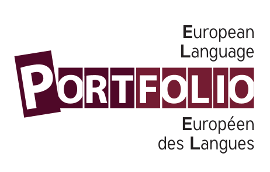Accredited and registered ELP
Accredited ELP models 2000-2010
In order to assure the conformity of European Language Portfolio models to the ELP Principles and Guidelines, the Council of Europe’s Steering Committee for Education set up a sub-committee called the European Language Portfolio Validation Committee. From 2000 until 2010 the Committee validated ELP models submitted by a wide variety of bodies ranging from ministries of education, through regional education authorities, international non-governmental educational associations and European projects, to chains of private schools. Validated models were accredited and permitted to use the title “European Language Portfolio” and to carry the logo of the Council of Europe. Accredited models also bear an accreditation number consisting of a serial number followed by the year of accreditation. Thus the first model accredited received the number 1.2000. Between 2001 and 2010, 118 ELP models were validated and accredited.
Registered ELP models 2011-2014
In 2011 the validation and accreditation procedure was replaced by registration based on self-declaration (developers completed a form confirming that their model was in conformity with the Principles and Guidelines). To distinguish them from accredited ELPs, registered ELPs were given numbers consisting of the year of their registration, the letter R, and a serial number. Thus the first registered ELP has the registration number 2011.R001.
- Validated and accredited ELP models by date
- Validated and accredited ELP models by country
- Validated and accredited ELP models by educational sectors
Accredited and registered ELPs are designed for use by a range of different learner groups in different contexts:
- different age-groups: from 4-year-olds to adults
- different educational sectors: primary, secondary, higher education, vocational education, adult education, etc.
- groups with particular needs, such as migrants
They were developed by different sorts of organisations:
- ministries of education
- international non-governmental organisations
- international projects
- private educational bodies
Models were developed in a variety of different formats, including combinations of the following:
- paper models (bound or loose-leaf)
- paper models available as downloads
- electronic models hosted on a central server or to be downloaded to a private PC
Models were published and distributed in different ways:
- through ministries
- through commercial publishers
- free downloads
Language Policy Portal
www.coe.int/lang
European Centre for Modern Languages
(ECML) - Graz, Austria



